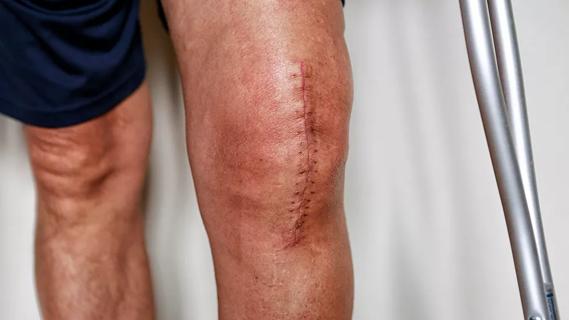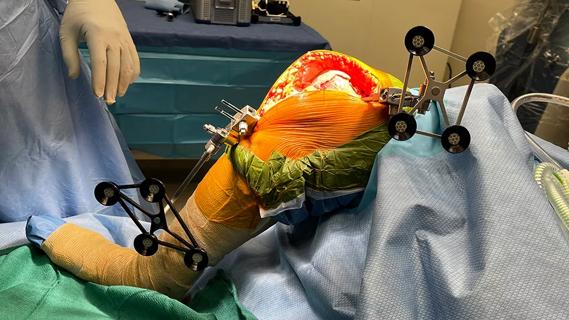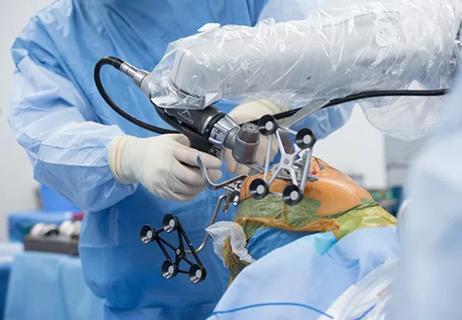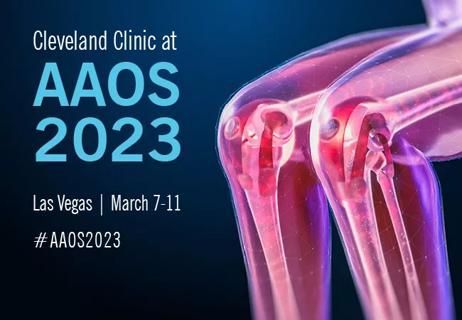Area Deprivation Index may help assess risk of complication after surgery

Socioeconomic status is widely believed to be a driving factor in outcome of primary total knee arthroplasty (TKA). However, socioeconomic status — with its various components (e.g., income, education, occupation) — is difficult to quantify and, therefore, difficult to assess and address with patients preparing for TKA.
Cleveland Clinic is a non-profit academic medical center. Advertising on our site helps support our mission. We do not endorse non-Cleveland Clinic products or services. Policy
A study led by a team of Cleveland Clinic researchers is among the first to explore the use of Area Deprivation Index (ADI) to characterize risk of adverse outcomes after TKA. The U.S. Health Resources & Services Administration created the ADI, scoring U.S. neighborhoods on a scale of 0 to 100. Higher scores indicate more disadvantaged areas. Scores are based on various factors including median home value, percentage of families below poverty level and percentage of population with a high school diploma.
“We found that by using ADI as a metric, we could more comprehensively assess a patient’s socioeconomic status at the time of total joint arthroplasty,” says Nicolas S. Piuzzi, MD, Director of Adult Joint Reconstruction Research in Cleveland Clinic’s Department of Orthopaedic Surgery. “This may present a new approach to optimizing patients before TKA, perhaps triggering the development of new interventions for patients at risk of a poor outcome.”
A second study took the use of ADI one step further, showing that outcomes of TKA and total hip arthroplasty (THA) were the same for patients with similar socioeconomic status regardless of race.
“It has been reported that race is correlated with outcomes of TKA and THA,” says Dr. Piuzzi. “But when we analyzed ADI, we found that Black patients and white patients with similar ADI scores had similar outcomes.”
The first study, published in The Journal of Arthroplasty, reviewed nearly 4,000 patients who had TKA at Cleveland Clinic between 2018 and 2020. Most patients (14.9%) lived in zip codes with ADI scores 31-40. Compared with those patients, patients who lived in areas with ADI scores 61-70 were more likely to stay in the hospital three days or longer (odds ratio [OR] = 1.60 [1.08-2.37], P = .019) and not be discharged to home (OR = 1.73 [1.08-2.75], P = .021).
Outcomes were worse for patients in the ADI 91-100 cohort. These patients were most likely to stay in the hospital three days or longer (OR = 2.27 [1.47-3.49], P < .001) and not be discharged to home (OR = 3.49 [2.11-5.76], P < .001). They also were most likely to be readmitted within 90 days after surgery (OR = 1.79 [1.02-3.14], P = .044).
There were no differences between ADI cohorts in prevalence of emergency room visits and re-operations within 90 days.
The odds of having a nonhome discharge or length of stay three days or longer increased exponentially beginning at an ADI score of 60.
The second study, presented at the American Academy of Orthopaedic Surgeons’ 2022 meeting and published in Clinical Orthopaedics and Related Research, analyzed nearly 6,000 patients who had THA or TKA at Cleveland Clinic between 2018 and 2019. Approximately 12% of patients were Black and 88% were white.
Researchers found that while white patients having THA were less likely to stay in the hospital three days or longer (OR = 0.43 [0.31-0.59], P < .001) or have nonhome discharge (OR = 0.39 [0.27-0.56], P < .001), ADI weakened the association between race and outcome.
Of the patients having TKA, white patients were less likely to stay in the hospital three days or longer (OR = 0.41 [0.32-0.54], P < .001) or have nonhome discharge (OR = 0.44 [0.33-0.60], P < .001). However, ADI mediated the association between race and length of stay (OR = -0.088 [-0.13 to -0.049], P < .001), and between race and nonhome discharge (OR = 0.046 [0.014-0.078], P = .006).
“When accounting for socioeconomic factors, there really was very little difference in outcomes of Black vs. white patients,” says Dr. Piuzzi. “Black or white patients with lower ADI scores tended to have more favorable outcomes. Black or white patients with higher ADI scores tended to have more complications and less favorable outcomes.”
Socioeconomic status, as indicated by ADI score, could be considered when preparing patients for TKA or THA.
“In addition to reviewing a patient’s comorbidities and lab tests before a surgical procedure, their socioeconomic environment also should be assessed,” says Dr. Piuzzi. “It’s important to glean information about a patient’s employment, housing and social support, among other factors. We may need to directly ask, ‘With whom do you live?’ or ‘Will you be out of work after your surgery?’”
A comprehensive understanding of the patient’s healing environment can guide physicians to address modifiable risk factors before they affect surgical outcomes.
“We may need to ensure that higher risk patients are connected with case managers and have a good plan for discharge,” says Dr. Piuzzi. “We may need to pay extra attention to their nutrition and otherwise address potential barriers to care.”

How to diagnose and treat crystalline arthropathy after knee replacement

Study finds that fracture and infection are rare

Cleveland Clinic orthopaedic surgeons share their best tips, most challenging cases and biggest misperceptions

Robot scores better in length of stay and home discharge; manual scores better in flexion and operative time

Study also finds lower 30-day mortality rate than previously reported

See you in Las Vegas, March 7-11

Odds of major complication are low even for the unhealthiest patients

Custom components offer better outcomes when conventional options fail